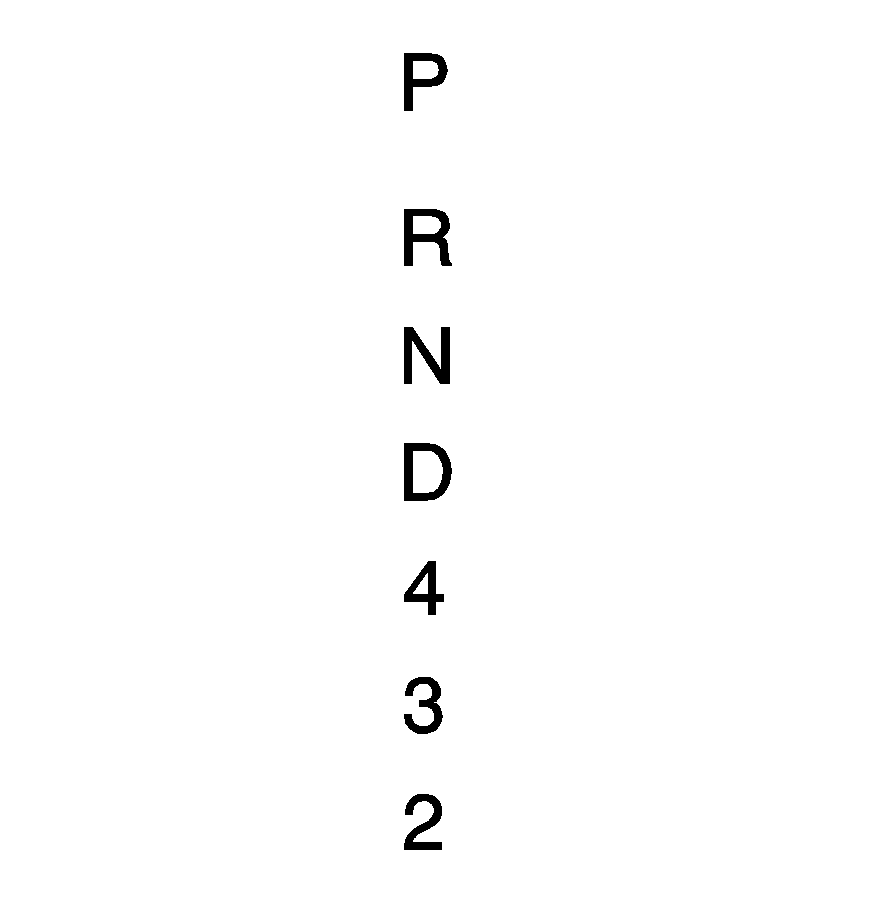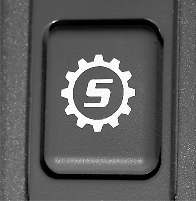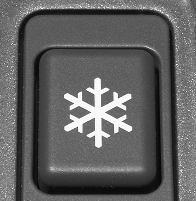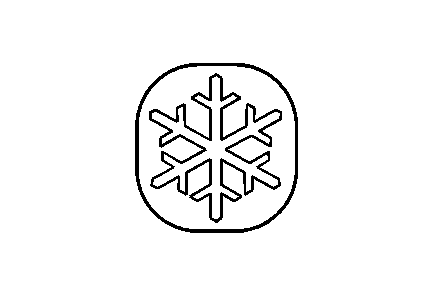If your vehicle has an automatic transmission, the shift lever is located on the center console between the front seats.

There are several different positions for the shift lever.
PARK (P): This position locks the rear wheels. It is the best position to use when you start the engine because your vehicle cannot move easily.Caution: It is dangerous to get out of the vehicle if the shift lever is not fully in P (Park) with the parking brake firmly set. The vehicle can roll.
Do not leave the vehicle when the engine is running unless you have to. If you have left the engine running, the vehicle can move suddenly. You or others could be injured. To be sure the vehicle will not move, even when you are on fairly level ground, always set the parking brake and move the shift lever to P (Park). See Shifting Into Park . If you are pulling a trailer, see Towing a Trailer .Ensure the shift lever is fully in PARK (P) before starting the engine. Your vehicle has an automatic transmission shift lock control system. You must fully apply your regular brakes before you can shift from PARK (P) when the ignition key is in ON. If you cannot shift out of PARK (P), ease pressure on the shift lever. Push the shift lever all the way into PARK (P) while pressing the button on the shift lever as you maintain brake application. Then move the shift lever into the gear you wish. See Shifting Out of Park .
Notice: Shifting to R (Reverse) while the vehicle is moving forward could damage the transmission. The repairs would not be covered by the vehicle warranty. Shift to R (Reverse) only after the vehicle is stopped.
REVERSE (R): Use this gear to back up. At low vehicle speeds, you can also use REVERSE (R) to rock your vehicle back and forth to get out of snow, ice or sand without damaging your transmission. See If Your Vehicle is Stuck in Sand, Mud, Ice, or Snow for additional information.NEUTRAL (N): In this position, the engine does not connect with the wheels. To restart when you are already moving, use NEUTRAL (N) only. You can also use NEUTRAL (N) when your vehicle is being towed.
Caution: Shifting into a drive gear while the engine is running at high speed is dangerous. Unless your foot is firmly on the brake pedal, the vehicle could move very rapidly. You could lose control and hit people or objects. Do not shift into a drive gear while the engine is running at high speed.
Notice: Shifting out of P (Park) or N (Neutral) with the engine running at high speed may damage the transmission. The repairs would not be covered by the vehicle warranty. Be sure the engine is not running at high speed when shifting the vehicle.
AUTOMATIC OVERDRIVE (D): This position is for normal driving. If you need more power for passing, and you are:| • | Going less than 35 mph (55 km/h), push the accelerator pedal about halfway down. |
| • | Going about 35 mph (55 km/h) or more, push the accelerator all the way down. |
The transmission will shift down to a lower gear and have more power.
Notice: While driving your vehicle, if you notice that it is moving slowly or not shifting gears as you increase speed, the transmission may be damaged. Have your vehicle serviced right away. You can drive in SECOND (2) when you are driving less than 35 mph (55 km/h) and AUTOMATIC OVERDRIVE (D) for higher speeds until then.
FOURTH (4): This position is also used for normal driving. However, it offers more power and lower fuel economy than AUTOMATIC OVERDRIVE (D).Here are examples for using FOURTH (4) instead of AUTOMATIC OVERDRIVE (D).
| • | When driving on hilly, winding roads. |
| • | When going down a steep hill. |
SECOND (2): This position gives you even more power than THIRD (3). You can use it on very steep hills, or in deep snow or mud. (If the shift lever is put in SECOND (2), the transmission will not shift into SECOND (2) until the vehicle is going slowly enough).
FIRST (1): The transmission will automatically select this gear when conditions indicate that more power is needed. You cannot select this gear manually.
Notice: Spinning the tires or holding the vehicle in one place on a hill using only the accelerator pedal may damage the transmission. If you are stuck, do not spin the tires. When stopping on a hill, use the brakes to hold the vehicle in place.
Sport Mode Button (Automatic Transmission)
This button allows you to change the driving mode of the vehicle from the normal driving mode to a sportier driving mode. In sport mode the vehicle will have firmer shifting and increased performance.

The sport mode button is located on the center console near the transmission shift lever.
Press the button once to turn on the sport mode. Press the button again to return to normal driving mode.

This light located on the instrument panel cluster will come on while the sport mode is active.
When driving in sport mode, the transmission may remain in a gear longer than it would in normal driving mode. Also, if the transmission is in AUTOMATIC OVERDRIVE (D) when the sport mode button is pressed, the transmission will immediately downshift into FOURTH (4) gear to provide more power. Both of these situations are normal and do not indicate a transmission problem.
Winter Driving Mode Button (Automatic Transmission)
This feature provides more traction during slippery conditions by using THIRD (3) gear when you begin to accelerate from a stopped position.

The winter driving mode button is located on the center console near the transmission shift lever.
Press this button once to turn on the winter driving mode feature. Press it again to turn the feature off. The winter driving mode feature works when the vehicle is in any gear except SECOND (2).

This light on the instrument panel cluster will come on when the winter driving mode is active.
When you turn off the ignition while using this feature, winter mode is automatically turned off. The vehicle will return to normal driving mode. You must select the winter driving mode feature each time you restart the vehicle if you wish to use the feature.
The transmission will be in THIRD (3) gear when the vehicle begins to move. Once the vehicle is moving, the vehicle will upshift normally.
The transmission will downshift when the accelerator pedal is pressed and held for more than two seconds, and the vehicle will accelerate more slowly than normal while using the winter driving mode.
This feature is not intended for continuous use or for use when the vehicle is stuck in sand, mud, ice, snow or gravel. If your vehicle becomes stuck, see Rocking Your Vehicle to Get It Out for more information on how to free it.
